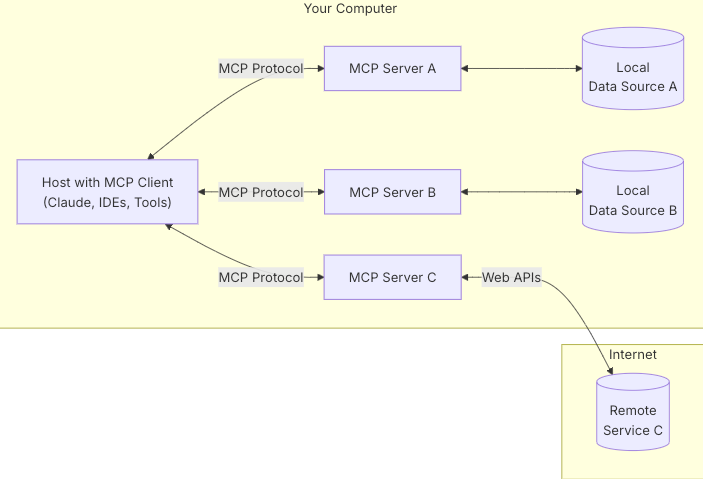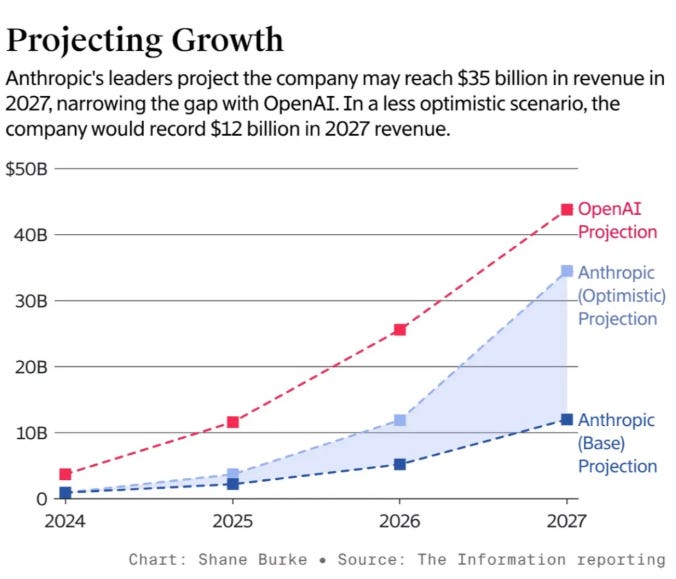Hey friends, I’m Akash!
Software Synthesis analyses the intersection of AI, software and GTM strategy. Join thousands of founders, operators and investors from leading companies for weekly insights.
You can always reach me at akash@earlybird.com to exchange notes!
As AI infrastructure startups are building for agent-computer interfaces, Anthropic’s Model Context Protocol (MCP) is gaining traction as a solution to the problem of memory.
The agentic pattern often deals with information that exceeds a model’s context limit. A memory system that supplements the model’s context in handling information can significantly enhance an agent’s capabilities.
Chip HuyenLarge language models possess vast knowledge, but they're trapped in an eternal present moment. While they can draw from the collected wisdom of the internet, they can't form new memories or learn from experience: beyond their weights, they are completely stateless. Every interaction starts anew, bound by the static knowledge captured in their weights. As a result, most “agents” are more akin to LLM-based workflows, rather than agents in the traditional sense.
Charles PackerLet’s walk through an example of a Sales AI tool wanting to build an integration into Salesforce.
MCP Host: Your Sales AI tool
This is the main application trying to access Salesforce data
MCP Client: The protocol client embedded in your Sales AI tool
Handles the actual connections to MCP servers
Part of your Sales AI tool's infrastructure
MCP Server: The Salesforce MCP server
Could be official (if Salesforce built it)
Could be community-built
Could be custom-built by your team
Translates MCP protocol into Salesforce API calls
Local Data Sources: Could be:
Local sales spreadsheets
Cached Salesforce data
Local CRM databases
Remote Services: Salesforce's API
The actual cloud service being accessed
Other examples might include:
Hubspot API
LinkedIn Sales Navigator API
Email marketing services
The contrast between developing custom integrations for every application with and without MCP is:
Development Effort:
Traditional: Write custom code for each API integration
MCP: Connect to pre-built MCP servers that handle the integration
Context Management:
Traditional: You maintain context between API calls yourself
Function calls are isolated transactions
MCP: Protocol maintains session context automatically
MCP maintains context across multiple interactions
Servers can adapt available tools based on conversation flow
Error Handling:
Traditional: Handle each API's unique error patterns
MCP: Standardised error handling across all services
AI-Specific Features:
Traditional: Build your own prompting and tool discovery
MCP: Built-in support for:
Dynamic tool discovery
Prompt templates
Progressive disclosure of capabilities
MCP servers can dynamically expose capabilities
Tools can be discovered and composed at runtime
Function calls are just request-response
MCP supports streaming, progressive updates
Better for long-running or complex operations
Companies like Stripe, Neo4j and Cloudflare already offer production-ready MCP servers - you can see the full repository of servers developed by the community or by service providers.
As Anthropic vies to narrow the gap with OpenAI, MCP’s growth could be key.
The early traction presents some interesting scenarios.
For data sources (often incumbent systems of record), as more AI apps use MCP, there's more incentive to build official MCP servers - similar to how companies build official APIs once there's enough demand
For AI companies, more MCP servers = more capabilities without building custom integrations. Companies can mix and match servers (e.g., combine Salesforce + Gmail + Calendar servers), maintain state and deliver truly agentic experiences across an array of applications.
An early pattern seems to be:
Community builds initial servers
As MCP gains adoption, companies build official versions
AI tools can choose between official, community, or custom implementations
There might be a parallel between the evolution of container registries (Docker Hub/ECR/GitLab) and how MCP's ecosystem is developing.
Vendor-Certified (like ECR):
ECR: AWS's managed, enterprise-focused registry
MCP Equivalent: Anthropic's official registry (83 servers)
Characteristics: High compliance, enterprise features, strong security
Community (like Docker Hub):
Docker Hub: Public, widely-used container registry
MCP Equivalent: GitHub/Hugging Face MCP servers
Characteristics: Low barrier to entry, experimental use cases, community-driven
Enterprise Private (like GitLab):
GitLab: Self-hosted, integrated with development workflows
MCP Equivalent: Private company MCP registries
Characteristics: Custom compliance, internal tools
There are several other second-order consequences.
By establishing MCP as the de facto standard, Anthropic could become the "Intel Inside" of enterprise AI. Even if MCP remains open-source, Anthropic gains influence through:
First-mover advantage in protocol governance
Enterprise support contracts for mission-critical deployments
Post-MCP, engineering costs for integrations will continue falling precipitously. This cost compression will further accentuate the deflationary forces driving more startup creation.
There will be security and governance challenges - attackers could poison MCP registries with malicious servers masquerading as legitimate services.
MCP will also enable enterprises to operationalise AI agents at a faster rate. Legacy and new applications can be exposed as MCP servers - if the service provider hasn’t already, then the community might build it soon enough.






